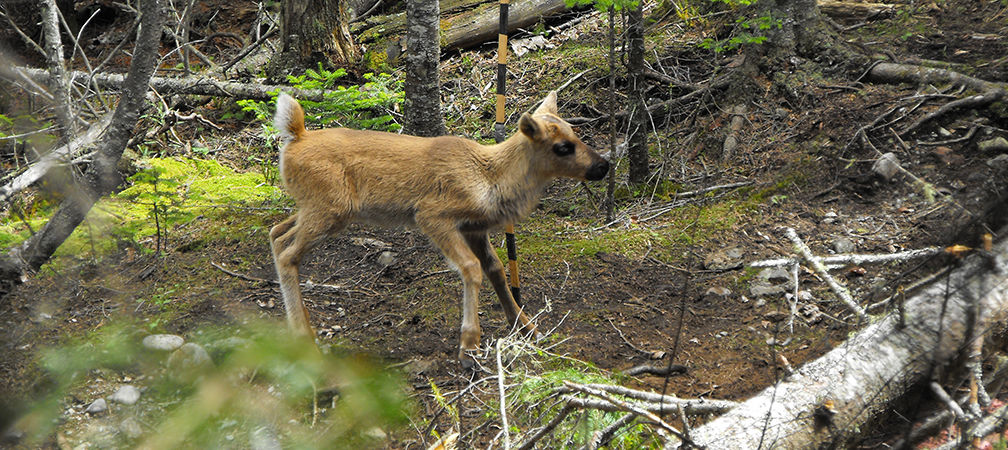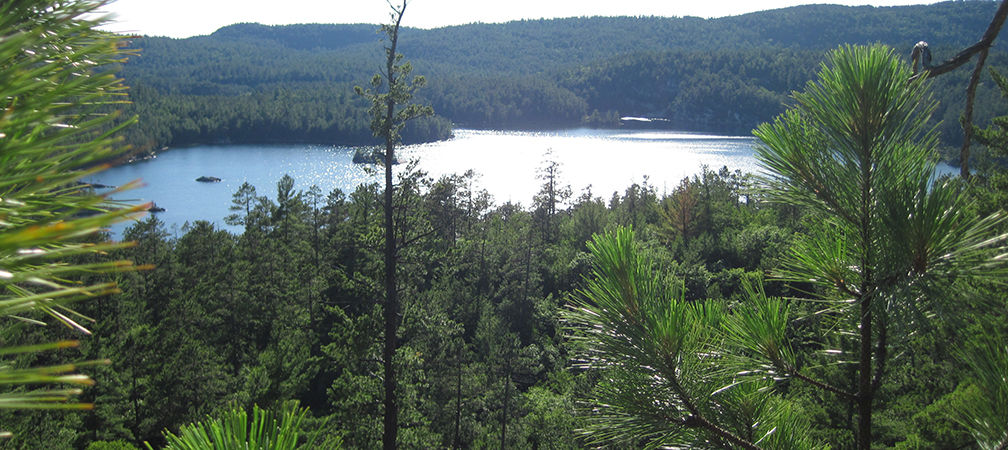Ontario Nature Blog
Receive email alerts about breaking conservation
and environmental news.
© Lora Denis
January 27, 2021–Julee Boan
Boreal Forest•Campaigns and advocacy•Habitat•Indigenous Relations•Protected Places•Stewardship and restoration•Wild Species
Canoes in Wolf Lake © Ryan Mariotti
It’s October 2017. I’m in Vancouver, British Colombia for Forest Stewardship Council (FSC) International’s General Assembly (GA). One forester colleague had warned me to get lots of sleep, drink water and do yoga in the weeks preceding the assembly. He warned it would be like running a marathon. That was an understatement.
FSC holds a GA of the entire membership every three years to determine the direction of the volunteer forest certification system. At the Vancouver GA, there were nearly 1,000 people attending (in person or voting by proxy). Some have called it a “radical democracy” as members from the three chambers – social/Indigenous, economic and environmental – gather to negotiate, deliberate and ultimately vote on key aspects of the certification system.

During the three days of dialogue (starting with early morning breakfast meetings and running into the late hours), members from 80 countries and Indigenous nations, including Brazil, Sweden and Australia, Maori, Haida and Maasai; labour leaders from the global south, Canada and around the world; large international and small grassroots environmental organizations; and forestry and forest products companies that have made social license a pillar of their success, gathered to discuss and find pathways forward to make progress on solving what are considered “wicked” or complex problems facing the world’s forests. Topics include loss of biodiversity, land grabs from Indigenous people and the unequal sharing of the benefits of forests.
The FSC certification system is based on 10 principles – including worker’s rights and conditions, Indigenous peoples’ rights, community relations and environmental protection, among others. While FSC International provides the overarching direction to try to ensure that the FSC labelling of products around the world provides a consistently high standard, each country can seek approval from FSC International to adapt specific indicators to reflect the ecology, legal frameworks, opportunities and challenges of their unique needs.
When FSC Canada approved its new National Forest Stewardship Standard in 2018, it established a gold standard for forest management. For many environmental organizations, a critical component of the new standard has been greater clarity regarding the need for more areas of permanent protection within managed forests, including:

To support these goals, Ontario Nature, partnering with Birds Canada, undertook an assessment of the more than 1 million hectares of candidate protected areas that forestry companies have identified through the FSC process. Our primary goal was to determine the conservation value of these sites and to make the case for their need for permanent protection.

Our key findings are as follows:

At a time of dual crisis – climate change and biodiversity loss – setting areas permanently aside from industrial development must be part of the solutions forward. Nearly every country in the world met in Nagoya, Japan, in October 2010 and agreed to 20 Aichi Targets. Through Aichi Target 11, they collectively agreed to the key role of protected areas in biodiversity conservation and to protect at least 17 percent of terrestrial and inland water by 2020.

FSC-certified forests have significant potential. In Ontario, those forests have three years to implement the new standard requirements for protected areas. Ontario Nature will continue to work closely with forest managers and independent auditors to ensure the spirit and intent of the certification system are implemented. However, what is missing is a committed partner with the provincial government.
To learn more about our work with FSC, watch our video “Protecting 1 million hectares in FSC-certified forests” and visit our Story Map to learn about FSC designated conservation lands and other candidate areas.
You can join us in protecting one million hectares of northern Ontario forests and wetlands by donating here: ontarionature.thankyou4caring.org/donation-pages/protected-places.

Gananoque Lake Nature Reserve © Smera Sukumar
I’ve seen several references to Candidate Protected Areas in recent months but can’t find a map showing these areas. Please let me know where I can find a map and specific information on these CPA’s.
Hi John,
We invite you to visit our protected areas StoryMap which features numerous candidate protected areas that we have identified, in partnership with community groups, Indigenous colleagues and industry partners: https://storymaps.arcgis.com/stories/d7c44e27e6724a1a83444c1d135973fd
– ON Melina